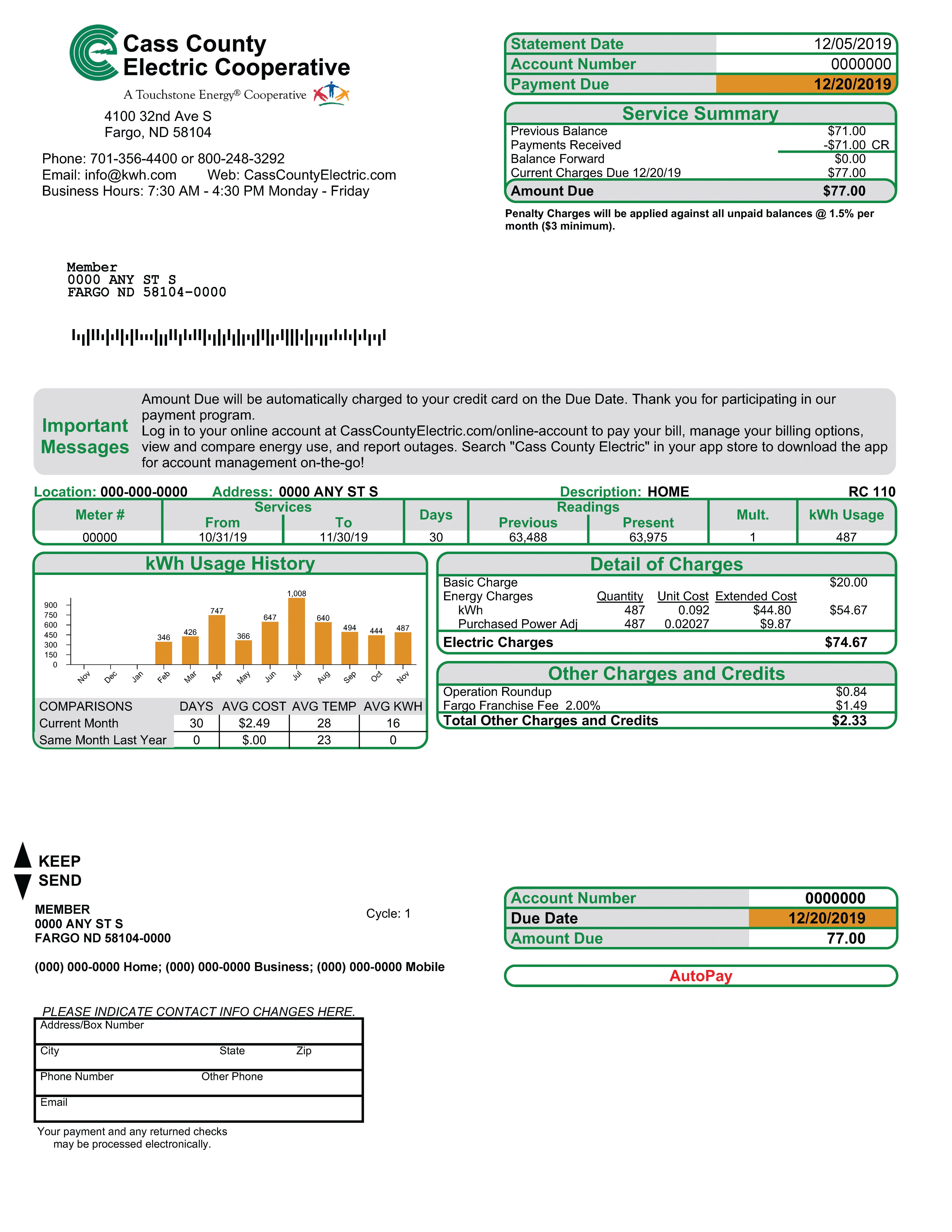Our Office: 4100 32nd Ave. S. Fargo, ND 58104
Understanding your energy bill

If you’re like most people, you probably glance at your energy bill just long enough to see the total amount before paying it and moving on with your day. But have you ever stopped to consider what all those itemized charges mean?
Taking a closer look at your bill can be surprisingly beneficial. Not only can you track how much electricity you use each month, but you can also better understand how charges are calculated and spot usage patterns. This knowledge is especially helpful if you’re trying to conserve energy or reduce your monthly expenses.
To help you get familiar with your bill, here’s a guide to the key sections you’ll find each month:
Account Number:
Your account number, also in the top-right corner, is essential for managing your account. Use it to sign up for an online account or download the Cass County Electric mobile app. The app offers features like account management and detailed energy usage analytics to help you stay on top of your energy consumption.
Important Messages:
This section includes updates from Cass County Electric, useful tips, and any important announcements related to your bill or services.
Service Information:
Here, you’ll find your service address, rate class (RC), and the dates of service being billed. This section also displays your meter readings, which are key to determining your energy usage for the month.
kWh Usage History:
One of the most insightful parts of your bill, this section provides a visual chart of your energy usage over the past year. It highlights fluctuations—such as higher usage during extreme weather months—and includes details like the number of billing days, average costs, temperatures, and total kilowatt-hours (kWh) used.
Details of Charges:
Basic Charge: A fixed monthly charge that helps cover the cooperative’s costs to provide service.
Energy Charges:
kWh Charge:
The cost of electricity you used, calculated by multiplying your rate (cost per kilowatt-hour) by your usage (total kWh).
Purchased Power Adjustment: Reflects variable costs in wholesale power.
Found in the upper-right corner, the statement date indicates the billing period—typically a 30-day cycle for electricity you’ve already used.

Understanding your bill isn’t just about seeing where your money goes—it’s about empowering yourself to make smarter energy choices. With tools like usage charts, account management options, and detailed breakdowns, your bill can be an invaluable resource for tracking and optimizing your energy consumption.
